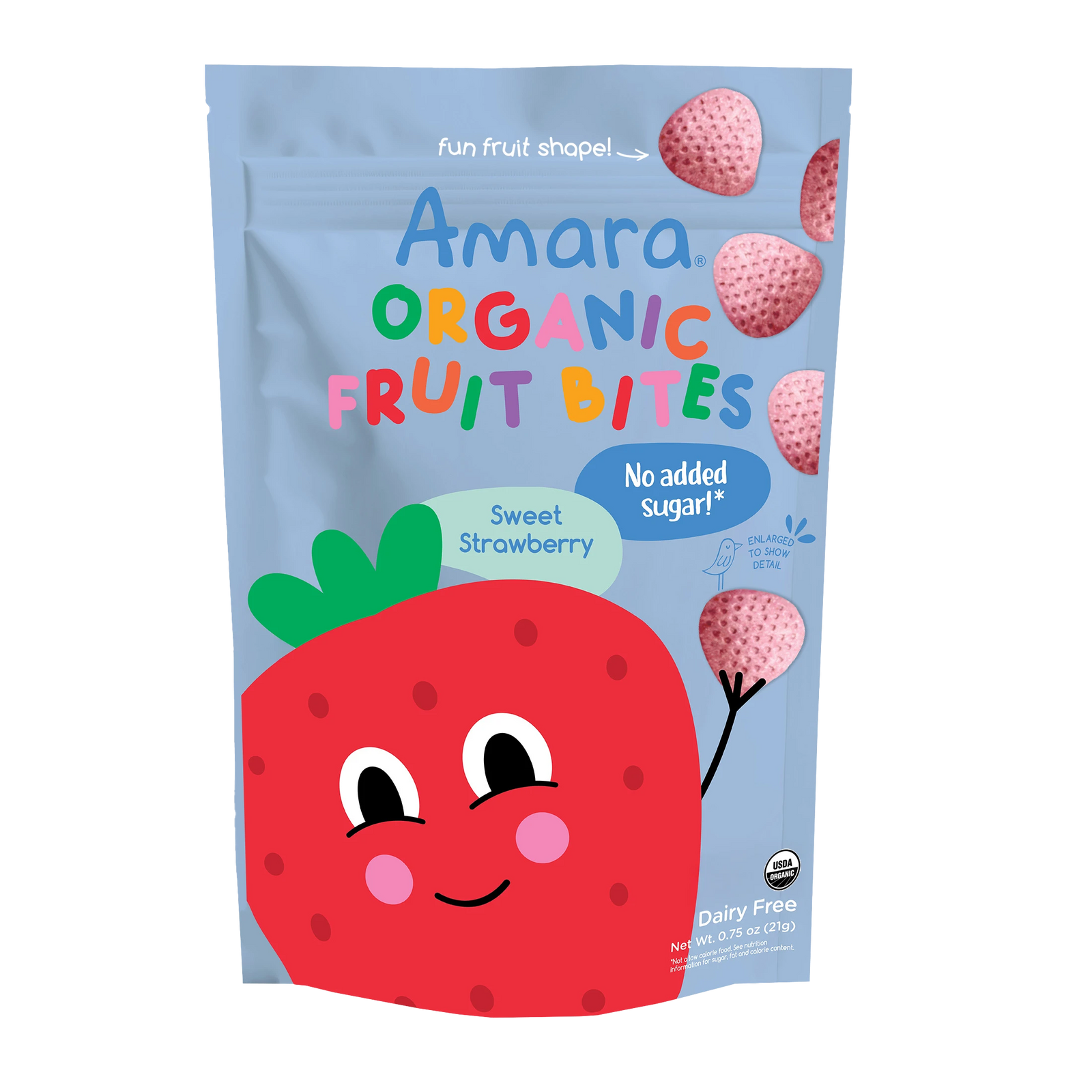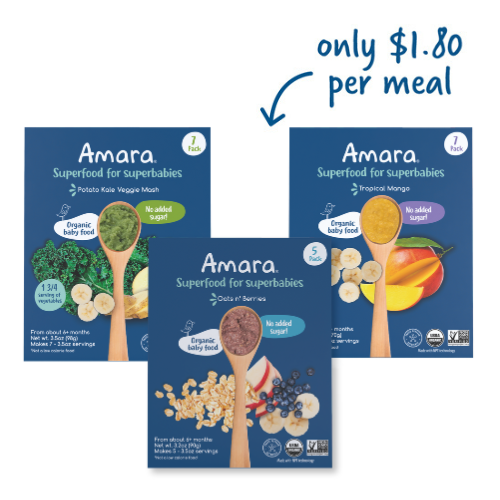
We have heard it a million times: eat your veggies. And yet, so many of us fall short on this. And what about our children? If we as adults are struggling to fill our plates with lots of vegetables, then surely our kids aren’t getting enough either.
Today, we dig into this topic, focusing on America’s “veggie report card.” We look at how many vegetables American children and adults are daily consuming, how that fares with government recommended intakes (hint: it’s not enough), and what we can do—as parents—to increase our own veggie count … and our children’s.
Before we dive in, let’s talk vegetables more generally first.
A recent study by Biodiversity International scientists identified a total of 1,097 vegetable species cultivated worldwide. Beyond that, there are thousands of varieties.
How do scientists classify all of these veggies?
Often, vegetables are grouped into eight main types based on which part of them is edible:
- Flower vegetables: plants that produce flowers commonly used for culinary purposes. While these vegetables have roots, leaves, and stems, their flowers are usually the only edible part. Cauliflower, broccoli, artichoke, caper, and loroco are the most commonly consumed vegetable flowers.
- Leafy vegetables: also called greens, salad greens, or vegetable greens. These veggies are mainly grown for their leafy parts. Well-known ones are spinach, cabbage, lettuce, bok choy, Brussels sprouts, kale, chard, and watercress.
- Tuber vegetables: veggies that grow underground on the root of a plant. Tuberous vegetables are usually high in starch and are used as a staple food in many parts of the world. The most commonly consumed ones are potato, cassava, sweet potato, kumara, yam, taro, Jerusalem artichoke, and ulluco.
- Root vegetables: vegetables that generally grow underground and are sources of edible roots. These veggies contain carbs, starches, and sugar. Carrots, radishes, turnips, beets, horseradish, celery, turmeric, and parsnips are the most commonly consumed root vegetables.
- Bulb vegetables: plants that grow just below the ground and produce edible bulbs. Intensely aromatic, these veggies usually have many layers and, depending on the type, can be eaten raw or used to add flavor to cooked dishes. Some of the most commonly used ones are onion, shallot, garlic, leek, spring onion, scallion, and fennel.
- Stem vegetables: plants that grow above ground and have edible stems. Asparagus, celery, chard, fennel, fiddlehead, cardoon, and bamboo shoots are the most popular stem vegetables. (There are also modified stems that can be found above and below ground, such as corms, rhizomes, and tubers.)
- Fruit vegetables: certain types of plants that are botanically classified as fruits but are used as vegetables for cooking purposes. Tomato, cucumber, eggplant, squash, avocado, bitter melon, and bell pepper are all fruit vegetables.
- Pod and seed vegetables: types of vegetables that contain seeds inside a pod. Popularly known as legumes, these vegetables are a good source of protein and fiber. Examples include peas, beans, lentils, okra, chickpea, peanut, soybean, and licorice.

That’s one way to understand veggies. In the U.S., the USDA divides them into the following subgroups:
- Dark green vegetables like broccoli, spinach, romaine, collard, turnip, and mustard greens.
- Red and orange vegetables like tomatoes, red peppers, carrots, sweet potatoes, winter squash, and pumpkin.
- Beans, legumes, and peas, including kidney beans, white beans, black beans, lima beans, fava beans, chickpeas, pinto beans, black-eyed peas, pigeon peas, split peas, edamame, and lentils.
- Starchy vegetables like white potatoes, corn, iceberg lettuce, onions, celery, cabbage, and green peas and beans.
Despite the great diversity of vegetables, scientists estimate that the average diet worldwide uses less than 7% of all vegetable species. In much of the developed world, for instance, people base their diets primarily on four veggies: tomatoes, potatoes, onions, and carrots.
Let’s recap why veggies are so great exactly.
Eating vegetables provides numerous health benefits: vegetables supply nutrients vital for the health and maintenance of our bodies, and people who eat them along with fruits as part of an overall healthy diet are likely to have a reduced risk of cardiovascular diseases, certain cancers, and other causes of early mortality. (This is because vegetables, like fruits, are sources of phytochemicals that function as antioxidants, phytoestrogens, and anti-inflammatory agents, all of which act as protective mechanisms in and for the body.)
Most vegetables are naturally low in fat and calories, helping people to reach and maintain healthy weights.
And among other health benefits, veggies are also an important source of many nutrients, including potassium, dietary fiber, folate, vitamin A, and vitamin C.
Why does this matter? Well, diets rich in potassium help to maintain healthy blood pressure. Vegetable sources of potassium include sweet potatoes, white potatoes, white beans, tomato products, beet greens, soybeans, lima beans, spinach, lentils, kidney beans, acorn squash, kohlrabi, and yuca.
Dietary fiber from vegetables helps to reduce blood cholesterol levels and may lower the risk of heart disease.
Vitamin A keeps eyes and skin healthy and helps to protect against infections.
And vitamin C helps to heal cuts and wounds and keeps teeth and gums healthy. It also assists your body in absorbing iron more easily.

OK, so how many vegetables are U.S. adults and children eating?
In short, not enough. Almost 90% of the U.S. population, including babies and toddlers, does not meet the recommended intake for vegetables.
Only 10% and 15% of boys and girls aged 1–3 years, respectively, consume the recommended 1 cup of vegetables per day.
For children aged 4–8 years, less than 5% consume the recommended 1.5–2 cups of vegetables per day. Instead, this age group, on average, eats around half of the amount of vegetables recommended.
According to data from the 2021 National Survey of Children’s Health, a study of over 18,000 young children in the U.S., many are not consuming fruits and vegetables daily and instead drink sugar-sweetened beverages regularly. One in three children (32%) aged 1-5 years did not eat a daily fruit, 49% did not eat a daily vegetable, and 57% drank a sugar-sweetened drink at least once in the previous week.
(Estimates of veggie consumption in this study varied by state, and states with higher poverty rates had worse outcomes: 16% of children in Vermont did not eat fruit daily compared with about 50% in Louisiana, a state with higher poverty. 30% of children in Vermont did not eat a daily vegetable compared with 64% in Louisiana. Overall, in 20 states, more than half of children did not eat a vegetable daily during the week that was analyzed.)
Vegetable consumption among U.S. children is lowest in boys aged 9–13 years and girls aged 14–18 years. Less than 1% of this population consumes the recommended 2–2.5 cups per day. Instead, on average they consume less than 50% of the recommended amount.
Across the U.S., veggie intake increases slightly with age, once children become adults, but it still remains quite low.

Knowing this, what are the (few) veggies Americans are consuming?
White potatoes, the most commonly consumed vegetable in the U.S., make up about 80% of starchy vegetable consumption and 21% of all vegetable consumption. Aside from potatoes, tomatoes account for another 18% of total vegetable consumption in the U.S. Lettuce and onions are two other big ones, making up more than 5% each of total American vegetable consumption.
When Americans do consume vegetables, almost half (45%) are eaten as a distinct dish. About 40% are eaten as part of a mixed dish (like a stir-fry or a sandwich). The remainder are consumed as snack foods and condiments.
Most Americans consume vegetables with additional sodium from salt and sauces added during cooking.
Why are average American intakes of veggies so low?
Well, as the 2021 National Survey of Children’s Health revealed with its state-by-state disparities, vegetables are under consumed in part because of cost and accessibility. Families of lower incomes often struggle to prioritize buying veggies and fruits over cheap processed foods. Relatedly, many families of lower incomes live in “food deserts“ where grocery stores, farmers‘ markets, and other food shops are either nonexistent or offer a very limited supply of fresh produce.
For many families, there’s also the time factor. In many people’s experiences, it takes longer to prepare veggies and fruits versus processed foods.
Many parents also believe that when they buy veggies and fruits, their children are unlikely to eat them, so they’re just wasting money on foods that will end up in the garbage can (and will cause a meltdown at the dinner table).
Parents are also less likely to offer vegetables that they personally dislike to their children.
(For global context, current fruit and vegetable intakes are well below recommendations across many countries. In response to this, more than 100 countries have developed food-based dietary guidelines that encourage increased fruit and vegetable consumption. Still, for a developed country like the U.S. to have such poor vegetable intake—we have much less of an excuse than most parts of the world.)

What are the most recent American Dietary Guidelines for vegetable intake?
|
Toddlers |
12 to 23 months |
⅔ to 1 cup |
|
Children |
2-3 yrs |
1 to 1½ cups |
|
4-8 yrs |
1½ to 2½ cups |
|
|
Girls |
9-13 yrs |
1½ to 3 cups |
|
14-18 yrs |
2½ to 3 cups |
|
|
Boys |
9-13 yrs |
2 to 3½ cups |
|
14-18 yrs |
2½ to 4 cups |
|
|
Women |
19-30 yrs |
2½ to 3 cups |
|
31-59 yrs |
2 to 3 cups |
|
|
60+ yrs |
2 to 3 cups |
|
|
Men |
19-30 yrs |
3 to 4 cups |
|
31-59 yrs |
3 to 4 cups |
|
|
60+ yrs |
2½ to 3½ cups |
(*These are general recommendations by age. Find more information at MyPlate Plan.)
What counts as a cup of vegetables?
- 1 cup of raw or cooked vegetables or vegetable juice
- 2 cups of raw leafy salad greens
Put another way, the U.S. government’s Dietary Guidelines for Americans recommend you make one-half of your plate at each meal fruits and vegetables.
What can we do to increase our children’s vegetable consumption?
Although our kids might be predisposed to prefer sweet-tasting foods and beverages and to avoid bitter-tasting foods such as dark-green vegetables, parents can help shift these patterns of food acceptance and rejection. And it can start early: before birth, the fetus detects the continually changing flavor profile of amniotic fluid, which reflects the mother's diet. And after birth, if mothers choose to breastfeed, babies receive food sensory experiences through milk. So, women who maintain a healthy diet through pregnancy and lactation prepare their infants to like healthful foods.
That way, when parents introduce their babies to solid foods around 6 months of age, they stand a better chance of the infant accepting a variety of veggies—and being open to new, healthful foods. In fact, studies show that this time period—6 to 12 months—is a formative one: introducing lots of variety to your baby in these months has been shown to make them more versatile eaters as they grow up (and that if you try and introduce variety later, like when they’re a toddler, they might be more resistant).
Something else to keep in mind when you’re introducing veggies to your little one: offer them veggies as stand-alone foods—like just a dark green vegetable. Most baby foods blend vegetables together with fruits or red and orange vegetables to provide additional sweetness (which, the logic goes, makes babies more likely to eat them). In order for our kids to learn to like vegetables, their flavors—even the bitter ones—must be perceptible in baby blends and other mixtures. So, look for baby foods that are not a big mixture of ingredients but instead just have one or a few key ingredients. Amara’s baby blends, for instance, contain only a handful of ingredients at most and all are just vegetables and fruits, blended together—nothing else.
Another tip for introducing more veggies to your little ones: mix it up. Serve different vegetables at different meals and across different days. Not only does the variety help develop their palate but it also keeps things interesting.
For example, choose snacks that include veggies, like our best-selling Mighty Sweet Greens Smoothie Melts with spinach and mango.

Parents can also shape children's flavor preferences by creating supportive feeding environments. What does that mean? Eating at the table with all family members (or many of them) present. Engaging in conversation while eating. Not having the TV on. Giving everybody appropriate portion sizes.
And remember: if you as the parent eat a variety of veggies, you’re not only giving your body the mix of nutrients it needs to function as an adult and caregiver, but you’re modeling great behavior for your kids, too.
When your child rejects a particular vegetable, don’t give up. Reintroduce it again at a later date—and again after that. Some nutritionists recommend offering a food up to eight times to increase acceptance of it.
(And as an important aside here: try not to add sugar or salt to the veggie to make your child like it.)
Get them excited about the versatility in nature: the tastes, textures, shapes, sizes, and seasons of different veggies and fruits.
Remember: no single fruit or vegetable provides all of the nutrients you or your child needs to be healthy. So, eat plenty every day.
Another strategy to increase vegetable intake is to increase the veggie content of mixed dishes (like a stir-fry). Or you and your family could reduce the portion size of the main dish (often meat) to allow for more vegetables as side dishes.
But keep in mind, the longer you cook them, they’ll lose more of their nutrition. It’s always best to avoid frying anything. It’s great to add spices and healthy oils (like olive oil) to veggies as you prepare them: just don’t overdo the oil or the salt.
Veggies can be raw—or cooked, frozen, canned, or dried. Veggies can be whole, cut-up, or mashed. Lots of options! 100% vegetable juice counts, too, but it’s better for us to eat (i.e., chew) our vegetables since juices can have reduced fiber content—and on top of that, they don’t necessarily help us teach our kids to love the textures, tastes, and experiences of consuming veggies.

A recent survey of commercial baby food products in the U.S. revealed a lack of variety in the types of vegetables offered. That’s where Amara comes in.
We make baby foods and toddler snacks with a variety of veggies and fruits, all of which are organic and additive-free. Unlike many baby foods, Amara’s products don’t have veggies and fruits as “down-label“ ingredients. Instead, consider our Kale Potato Veggie Mash: the only ingredients are potatoes, kale, bananas, and onion.
We at Amara care about increasing people’s vegetable intake because we care about families. And we believe good health starts at age 0—which is why we’re in the business of nutrient-dense baby and toddler food.
***
Article researched by:
Amara's Chief Nutritionist: Sonia A. Schiess, PhD in Nutrition, specialized in the introduction of solids and liquids to infants. Sonia's passion started when she was studying nutrition and dietetics in university, completing a post degree in Human Nutrition. Later on, she completed her PhD as a nutritionist, with a focus on introducing food in the first year of a baby's life. Her wide experience gives her a unique perspective, drawing from her time in clinics, hospitals, independent consulting and university research. She's authored several papers including "Introduction of complementary feeding"; "Introduction of potentially allergenic foods in the infant's diet during the first year of life" and "Intake of energy providing liquids during the first year of life" in five European countries. The combination of Sonia's science and our chef's magic ensures every Amara product is not only optimized for your baby's health but is delicious as well.
***
References:
https://www.myplate.gov/eat-healthy/vegetables
https://www.hsph.harvard.edu/nutritionsource/what-should-you-eat/vegetables-and-fruits/
https://northernnester.com/types-of-vegetables
D Aune et al., Fruit and vegetable intake and the risk of cardiovascular disease, total cancer and all cause mortality—a systematic review and dose response meta-analysis of prospective studies. International Journal of Epidemiology, 2017
Dietary Guidelines for Americans 2015-2020 & 2020-2025; as well USDA 2018
AJ Bakke et al., Blending dark green vegetables with fruits in commercially 4 available infant foods makes them taste like fruit. Elsevier 202
CA Forestell, You Are What Your Parents Eat: Parental Influences on Early Flavor Preference Development, Nestle Nutr Inst Workshop Ser, 2020
SL Johnsons & KJ Moding, Introducing Hard-to-Like Foods to Infants and Toddlers: Mothers' Perspectives and Children's Experiences about Learning to Accept Novel Foods. Nestle Nutr Inst Workshop Ser, 2020
A PIetrobelli et al., Nutrition in the First 1000 Days: Ten Practices to Minimize Obesity Emerging from Published Science. Int. J. Environ. Res. Public Health 2017
JL Salvin & B Lloyd, Health Benefits of Fruits and Vegetables. Adv. Nutr. 2012
TC Wallace et al., Fruits, vegetables, and health: A comprehensive narrative, umbrella review of the science and recommendations for enhanced public policy to improve intake. Critical Reviews In Food Science and Nutrition 2020
AS Wickoff et al., Intake of fruits, vegetables lacking in 1- to 5-year-olds: CDC study. AAP 2023







Leave A Comment